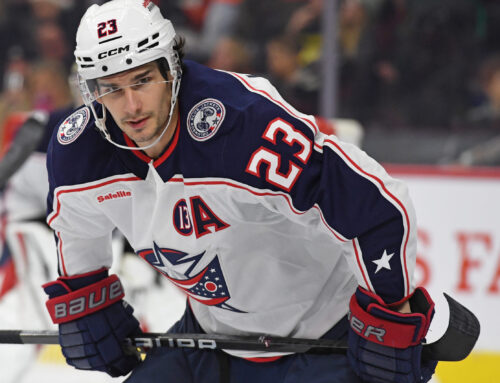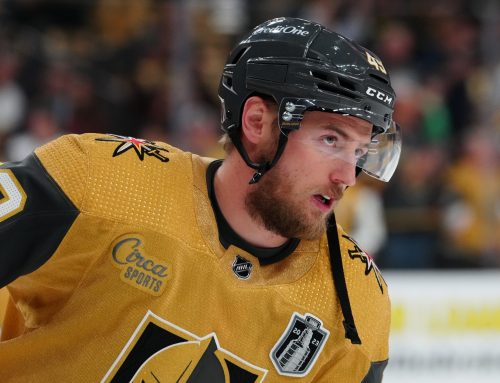This week we are returning with Part Three of our playoff series review. In the last two articles we covered the teams that were eliminated in the first round. This week we are going to take a look at teams who were eliminated in the second round. This means Carolina, Vancouver, Colorado, and Boston.
Like with all playoff action we are still dealing with some small sample sizes, but these teams got at least four wins under their belt and played two different teams. It just means we might take this data a little bit more seriously than the first round data.
A quick reminder from those first articles: this series is really focused on the things that changed for the team. It is such a small sample size that we are not going to read too much into point paces etc.. but instead look at how players were utilized in these win-or-go-home series and if that change resulted in anything different on the score sheet or in the underlying numbers. Doing so might give us a bit of insight into how coaches view certain players and who might be primed for a different role next season compared to this one. This is also the playoffs so to some extent we would assume that a team's top players see a bit of an increase while some depth players might fall off a bit.
And now on to the process. We will be looking at deployment and specifically the percentage of time on the power-play, and total time on ice. We will be using percent as overtime games can add significant time to a player's overall count without changing that player's real deployment opportunity. In order to get this data we will be running a Big Board report for the playoffs and comparing that to a second custom Big Board report for the last two months of the regular season. That comparison will tell us which players have gained or lost time between these two samples. Essentially, we are looking at four data points from two different time periods. We have basic scoring data (points and shots per game), then basic time on ice data (percent of the power-play and total time on ice).
To start off let's take Vancouver. They played 13 games, although a few names missed a game or two. There were only three forwards who saw a meaningful increase in their time on ice, both overall and on the power play; JT Miller, Brock Boeser, and Elias Lindholm. There isn't much to say about Miller; he has been a very significant part of the Vancouver offense for several years. Brock Boeser and Elias Lindholm on the other hand are worth a mention. Boeser saw over 20 minutes a night in total, over 80 percent of the power-play time, and put up a point per game pace. On its own it would be worth noting these stats, but pair that with his regular season data and Boeser is certainly a person of interest going into next year (assuming of course he gets some good health news). Lindholm is a slightly different story. He wasn't having a great season and did not do very well once he arrived in Vancouver. While it is technically true that he increased his point pace to along with his time on ice in the playoffs he still was seeing less than 60 percent of the team's power play (when others like Boesor were north of 80 percent), and that increased point pace brought him to a 63-point, full season pace; he was on a 30-point pace heading into the playoffs. It is a positive thing that he was relied upon in the playoffs and saw increases in shot rates and point pace, but it certainly doesn't quite erase the bad taste he left in manager's mouth from his season performance. It also doesn't do anything for his off-season market value. As a UFA a lot of his value for next year will be dependent on where he ends up and what kind of role he gets there, but I am not really seeing much in this sample that is incredibly optimistic.
Over in Colorado things went almost exactly as you would expect. The top line got more time, though performed a little bit worse than during the end of regular season. This isn't a knock on Nathan Mackinnon, far from it. His end of season pace was almost two points per game and almost six shots per game. Compared to that, a 104-point pace, and 4.25 shots per game is of course going to look worse. The interesting piece for Colorado is those secondary players. Valeri Nichushkin, Artturi Lehkonen, and Jonathan Drouin swapped roles a number of times depending on who was in the lineup at any given time during the regular season. That continued in the playoffs, with Nichushkin and Lehkonen being the clear winners on paper. Each had over 22 minutes a night on average, over 80 percent of the team's power-play time, took more than three shots per game, and had point per game paces or higher. Drouin only played three games, missing a lot of time with a lower body injury. He did have reasonable production in the time he got though, just not quite as successful as the other two. Based strictly on this sample Nichushkin might have the edge in terms of future value, but his suspension until November, and some ambiguity about his future with the team certainly puts that into question. Drouin isn't under contract yet, so his role is also a question mark. That leaves Lehkonen as the guy who showed up the most in the playoffs who is most likely going to be in a decent spot to start the 24-25 season. This is a little outside the scope of this article, but we also shouldn't forget about Gabriel Landeskog who might be available at some point next season, though the news on that front is also pretty vague. Any updates to that situation could certainly impact Lehkonen here as well.
Carolina saw quite a few relatively big time on ice increases. Essentially everyone in their top six saw more time overall, as did Jordan Staal and Jordan Martinook. The only person who saw an increased power-play role was Teuvo Teravainen. Given these increases the outputs are really all over the place. The only players who actually shot more were Seth Jarvis and Jordan Staal, while Andrei Svechnikov and Martinook were the only ones who actually put up higher point paces. Sebastian Aho, Jarvis, and Jake Guentzel still saw the most time overall, and were the most effective scoring line along with Svechnikov. It is hard to take too much away here, particularly since so much of this roster is up in the air this summer. Guentzel, Martinook, and Teravainen are all UFAs, while Jarvis, Martin Necas, and Jack Drury are RFAs. That is in addition to Tony DeAngelo, Brett Pesce, and Brady Skjei being UFAs on defense. If I had to grab a takeaway from Carolina's postseason performance, it would be that Jarvis put a bit of an exclamation point on a good season. Otherwise, it seems like an example of some good players playing pretty well, and a couple of depth players who got more time probably in a shutdown capacity.
Finally, Boston. For a team that made it to the second round, there really isn't that much to get excited about from this data sample. In terms of deployment not much really changed. Unless you count Danton Heinen and Justin Brazeau going from no power-play time to a little power-play time. Morgan Geekie, Jake DeBrusk, and Charlie Coyle saw some increases in overall time on ice, but some of that is going to be due to overtime games. In terms of production, Brad Marchand and Jake DeBrusk put up slightly higher point paces during the postseason while Charlie Coyle and James Van Reimsdyk did slightly better in terms of shot rates. Everyone else essentially did worse in both areas. If I am picking names to be kind of interested in in this data set, I am picking DeBrusk and Coyle. Both increased their time with DeBrusk increasing his point production (though dropped a little in shot rates) and Coyle increasing his shot rates. In terms of downsides though, DeBrusk is a UFA so who knows where he will land and Coyle's point pace was abysmal (about a 30-point pace over a full season) which certainly dampens my enthusiasm (though see all of the caveats around small sample sizes with regards to point pace numbers)
That is all for this week.
Do your part to support organizations working to make hockey for everyone.





 S.J
S.J EDM
EDM ANA
ANA PIT
PIT BUF
BUF MIN
MIN DET
DET CBJ
CBJ UTA
UTA NSH
NSH
